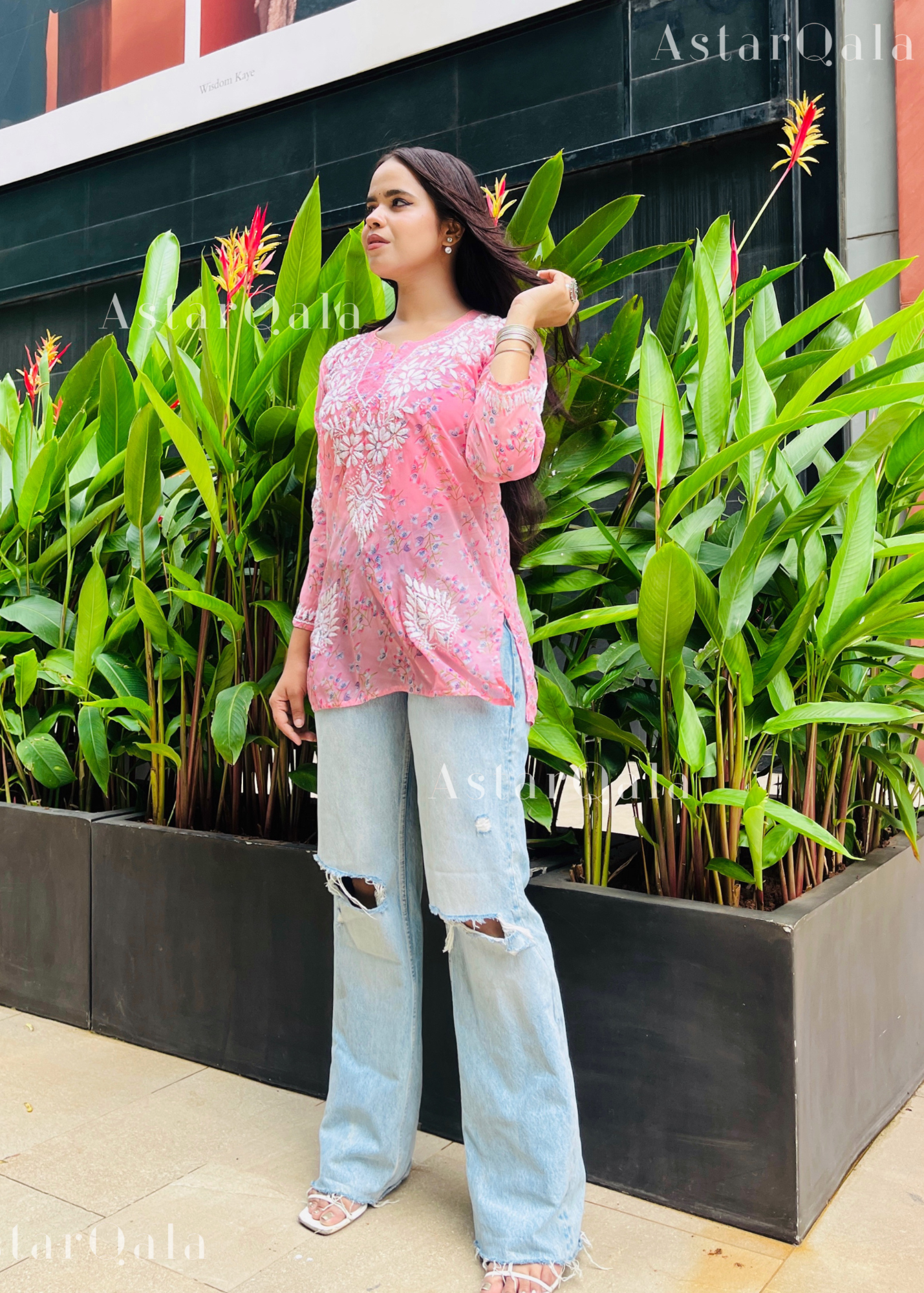Origins and Heritage:
Chikankari:

- Originating in Lucknow, India, Chikankari has deep roots in Mughal patronage, dating back to the 17th century.
- It boasts a rich heritage, with its intricate hand-embroidery reflecting a blend of Persian and Indian artistic influences.
Ari Work:

- Ari work has its roots in Kashmir, India, with a history deeply embedded in the Kashmiri textile tradition.
- The craft involves the use of a specialized hooked needle called the 'Ari,' hence the name.
Technique and Stitches:
Chikankari:
- Chikankari is characterized by its delicate and fine white threadwork on sheer fabrics like muslin and cotton.
- Stitches used in Chikankari include 'Taipchi' (chain stitch), 'Bakhia' (embossed shadow work), 'Hool' (eyelet), and 'Phanda' (knot stitch), among others.
Ari Work:
- Ari work involves a unique hook-shaped needle, which is used to create intricate patterns on fabric.
- The needle is passed through the fabric, creating chain stitches that form beautiful and detailed designs.
Design Aesthetic:
Chikankari:

- Chikankari designs often feature floral motifs, paisleys, and geometric patterns.
- The white-on-white embroidery is a classic aesthetic, though contemporary adaptations may include colored threads.
Ari Work:

- Ari work is known for its elaborate and dense patterns, often depicting scenes from nature, Persian motifs, or intricate geometric designs.
- The embroidery tends to be more colorful, with a wide palette of threads enhancing the visual appeal.
Geographical Influence:
Chikankari:
- Primarily associated with Lucknow and its surrounding regions, Chikankari has a strong cultural connection to Northern India.
Ari Work:
- Originating in Kashmir, Ari work reflects the artistic traditions and cultural influences of the Kashmiri region.
Usage and Application:
Chikankari:

- Chikankari is often seen on traditional Indian attire like sarees, salwar suits, and kurtas. It has also found its way into contemporary Western wear.
Ari Work:

- Ari work is commonly found on Kashmiri shawls, suits, and carpets. The intricate patterns make it well-suited for special occasions and formal wear.
In essence, while both Chikankari and Ari work share the common thread of being exquisite hand-embroidery techniques from India, their unique histories, techniques, and design aesthetics set them apart, each adding its own chapter to the story of Indian craftsmanship.



